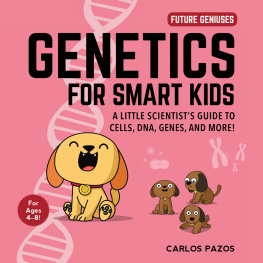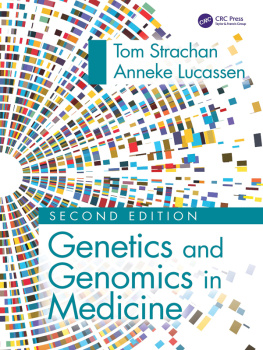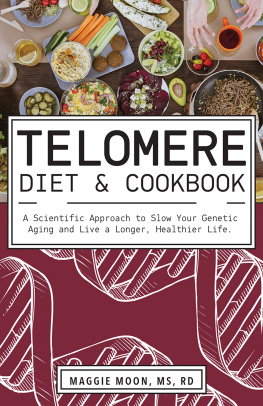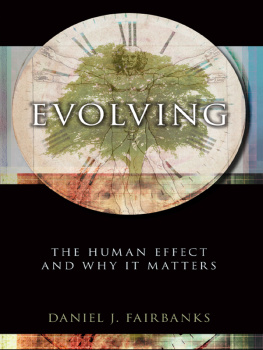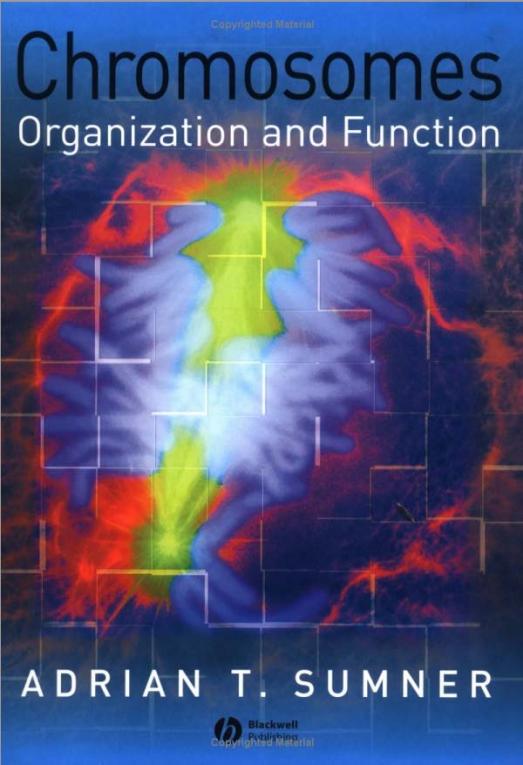
C H RO M O S O M E S : O R G A N I Z AT I O N A N D F U N C T I O N
Chromosomes
Organization and Function
Adrian T. Sumner
North Berwick, United Kingdom
2003 by Blackwell Science Ltd
a Blackwell Publishing company
350 Main Street, Malden, MA 02148-5018, USA 108 Cowley Road, Oxford OX4 1JF, UK
550 Swanston Street, Carlton South, Melbourne, Victoria 3053, Australia Kurfrstendamm 57, 10707 Berlin, Germany The right of Adrian Sumner to be identied as the Author of this Work has been asserted in accordance with the UK Copyright, Designs, and Patents Act 1988. All rights reserved. No part of this publication may be reproduced, stored in a retrieval system, or transmitted, in any form or by any means, electronic, mechanical, photocopying, recording or otherwise, except as permitted by the UK Copyright, Designs, and Patents Act 1988, without the prior permission of the publisher.
First published Library of Congress Cataloging-in-Publication Data
Sumner, A.T. (Adrian Thomas), 1940
Chromosomes: organization and function/Adrian T. Sumner. p.
cm.
Includes bibliographical references and index. ISBN 0-632-05407-7 (pbk.: alk. paper)
1. Chromosomes.
I. Title.
QH600.S863 572.87 dc A catalogue record for this title is available from the British Library. Set in 9.5/12 pt Bembo
by SNP Best-set Typesetter Ltd., Hong Kong Printed and bound in the United Kingdom
by MPG Books Ltd, Bodmin, Cornwall
For further information on
Blackwell Publishing, visit our website: http://www.blackwellpublishing.com
Contents
Preface, ix
Chapter 4:
Assembly of chromatin, 44
4. Introduction, Chapter 1:
Why study chromosomes? 1
4. The nucleosome bre, 1. Early studies of chromosomes, 4. Packing nucleosomes into solenoids, 1. The origin of genetics, and the
4. Yet more packing, chromosome theory of inheritance, 4. Other ways to pack DNA, 1. The chemical nature of genes and
4. Summary, chromosomes, Websites, 1. The position of chromosomes in an age
of molecular biology, Chapter 5:
The chromosomes in
Website, interphase, 57
5. Interphase nuclei: sites of chromosome
Chapter 2:
Mitosis, meiosis and the cell
activity, cycle, 5
5. How are the chromosomes arranged in
2. The necessity for accuracy in the cell
the nucleus? cycle, 5. Where do replication and transcription
2. The mitotic cycle, take place? 2. Essentials of mitosis, 5. The nuclear matrix, 2. Other cell-cycle events must be
5. Other nuclear structures, co-ordinated with mitosis, 5. Interphase nuclei are highly organized
2. Meiosis, and dynamic, 2. Accuracy is ensured in cell division, Website, Chapter 3:
DNA, the genetic code, 24
Chapter 6:
Structure of mitotic and
3. Stability and variability of DNA, meiotic chromosomes, 70
3. The amount of DNA in nuclei, and the
6. Chromosomes of dividing and interphase
C-value paradox, cells compared, 3. Repetitive DNA sequences with a
6. Making a mitotic chromosome, function, or just junk? 6. Loops and scaffolds, 3. DNA replication, 6. Chromosome condensation the nal
3. 5-Methylcytosine epigenetic
stages, modication of DNA, 6. Biochemistry of condensation, 3. DNA damage and repair, 6. The periphery of the chromosome, 3. DNA is dynamic, 6. Meiotic and mitotic chromosomes
Websites, compared,
vi
Contents
6. There is still much to be learnt about
Chapter 11:
The nucleolus and the
chromosome structure, nucleolus organizer regions
(NORs), 133
Chapter 7:
Constitutive
11. The importance of nucleoli and
heterochromatin, 84
NORs, 7. What is heterochromatin? 11. The ribosomal genes, 7. Where is constitutive heterochromatin on 11. Silver staining of NORs and nucleoli
the chromosomes? what does it mean? 7. What is constitutive heterochromatin
11. The nucleolus in interphase, made of ? 11. What happens to the nucleolus during
7. What does heterochromatin do? cell division? 7. Applications of heterochromatin
11. What else does the nucleolus do? staining, 7. Heterochromatin today, Chapter 12:
Centromeres, kinetochores
Websites, and the segregation of
chromosomes, 143
Chapter 8:
Sex chromosomes and sex
12. What are centromeres and
determination, 97
kinetochores? 8. What are sex chromosomes? 12. How are centromeres constructed? 8. The evolution of sex chromosomes, 12. How are kinetochores made? 8. Sex chromosome systems and mechanisms
12. Proteins of the centromere and
of sex determination, kinetochore, 8. Dosage compensation: coping with
12. Holocentric chromosomes, different numbers of X chromosomes in
12. Kinetochores are essential for the
the two sexes, functioning of chromosomes, 8. Sex chromosomes at meiosis and
gametogenesis, Chapter 13:
Telomeres, 159
8. Sex chromosomes: different means, the
13. What is a telomere? same ends, 13. Telomeric DNA, Websites, 13. How do telomeres maintain
chromosome length? Chapter 9:
Imprinting, 109
13. How do telomeres protect chromosome
9. What is imprinting? ends? 9. Which organisms show imprinting? 13. Telomeres and the spatial organization of 9. How does imprinting work? nuclei, 9. What is imprinting for? 13. Telomeres, ageing and cancer, Websites, Websites, Chapter 10:
Euchromatin and the
Chapter 14:
Lampbrush
longitudinal differentiation
chromosomes, 171
of chromosomes, 117
14. What are lampbrush chromosomes? 10. What is euchromatin? 14. Lampbrush chromosome
10. Euchromatin and chromosome banding
structure, in mammals, 14. What have we learnt from oocyte
10. Longitudinal differentiation of
lampbrush chromosomes? chromosomes in non-mammals, 14. Lampbrush Y chromosomes in Drosophila 10. The how and why of longitudinal
spermatocytes, differentiation, Websites,
Contents
vii
Chapter 15:
Polytene chromosomes, 182
17. Numerical chromosome defects errors
15. What are polytene chromosomes? in cell division, 15. Polytene chromosomes in Diptera, 17. Diseases produced by chromosome
15. Polytene chromosomes and macronucleus
deletions and duplications, formation in ciliates, 17. Chromosome breakage syndromes
15. Mammalian polytene chromosomes, failures in DNA repair, 15. Polytene chromosomes in plants, 17. Fragile sites and triplet repeat
15. Mechanisms of polytenization, diseases, 15. What is the point of polytene
17. Diseases of imprinting, chromosomes? 17. DNA methylation and disease, Websites, 17. Telomeres and disease, 17. Cancer anything and everything can
Chapter 16:
Chromosomes, the karyotype
go wrong with chromosomes, and evolution, 194
Websites, 16. Chromosomes and evolution, 16. Constraints on chromosome size, shape
Chapter 18:
Chromosome
and number, engineering and articial
16. Types of chromosome change during
chromosomes, 228
evolution, 18. Engineering chromosomes an ancient
16. Chromosome changes and
technique, speciation, 18. What is an articial chromosome? 16. Nucleotypic effects, 18. How to make articial
16. Chromosomal change is a concomitant
chromosomes, of evolution, 18. Articial chromosomes the
future, Chapter 17:
Chromosomes and
disease, 206
References, 239
17. The signicance of chromosomal
disease, Index, 275
Preface
Several years ago, with the tidal wave of mole- to guide the reader to further, related informa- cular biology threatening to engulf and obliter- tion. I have also included a substantial amount of ate the rest of biology, it might have seemed that tabular material, which I believe is the most the study of chromosomes was something to be satisfactory way of dealing with the vast amount left to a few old-fashioned scientists to occupy of data now available on some topics.We are sup- them harmlessly until they retired. In fact, posed to be living in an electronic age, and nothing could be further from the truth, and where appropriate I have referred to websites, but recently there has been an upsurge in chromo- only when they supplement or complement the some studies, stimulated by these advances in material in this book. Access to additional chro- molecular biology but accompanied by the real- mosomal websites can be obtained through ization that the arrangement of biological mole- www.chromosome.net/index.htm
Next page

